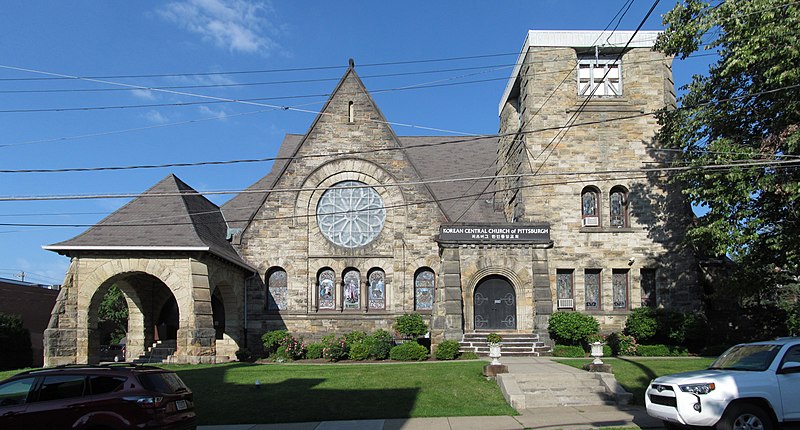
Father Pitt has always had mixed feelings about HDR (“high-dynamic-range”) images. They are made from multiple exposures—this one, for example, is put together from three photographs—in an attempt to capture the detail in both the highlights and the shadows. On the one hand, they always strike him as artificial-looking; on the other, HDR imaging was the only effective way to capture both the stonework and the lowering clouds in this picture. If you look closely, you will notice an artifact of the process: it was a windy day, so the stones are sharp but the trees are blurred.
This is the Penn Avenue gatehouse of Allegheny Cemetery, seen from inside the cemetery. Old Pa Pitt returned two days later to try another HDR image, and this time—with some tweaking of software settings—he managed a more natural-looking result:

If he were at all concerned with his reputation as an artist, he would have led with this picture. But he thought you might enjoy seeing a first attempt and the refinement that followed, in that order.
If you are looking for some atmospheric fun for Halloween, Father Pitt’s Pittsburgh Cemeteries is full of interesting pictures and information.


















